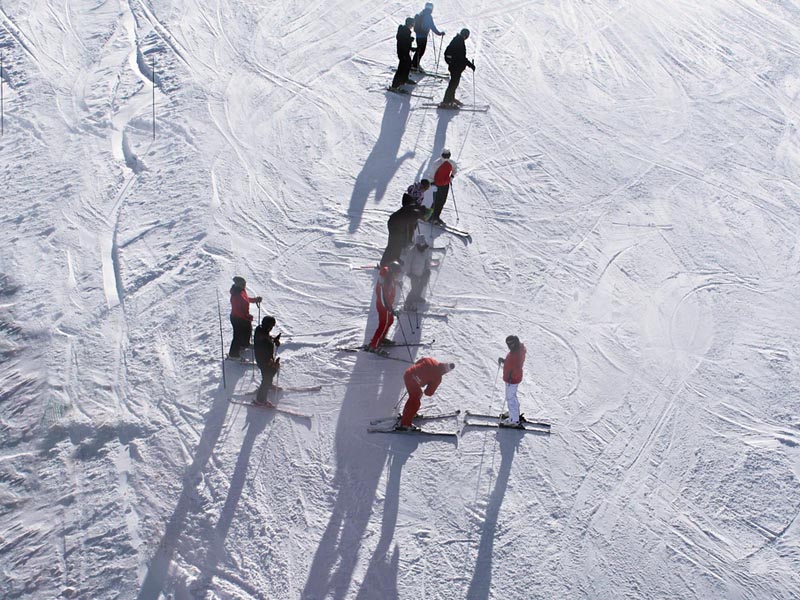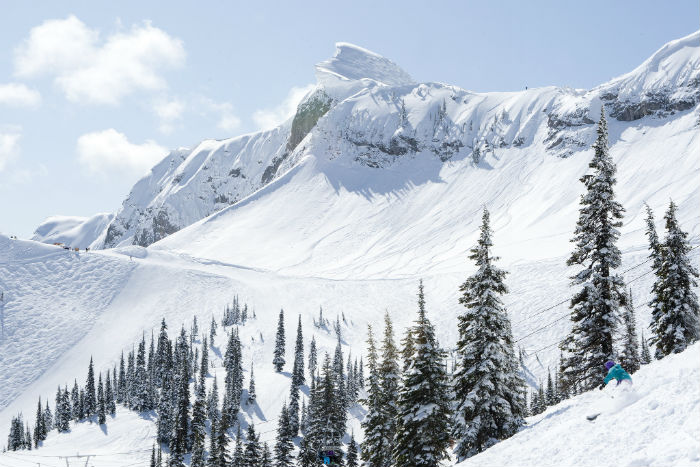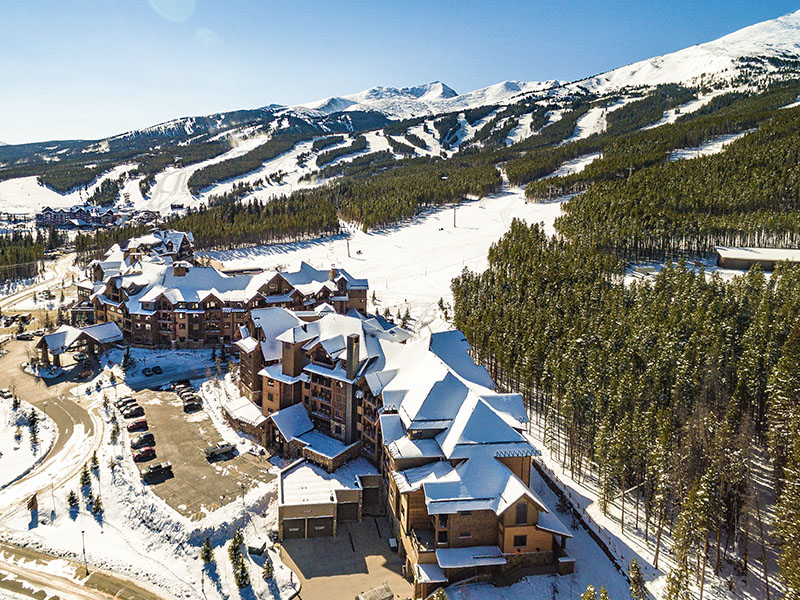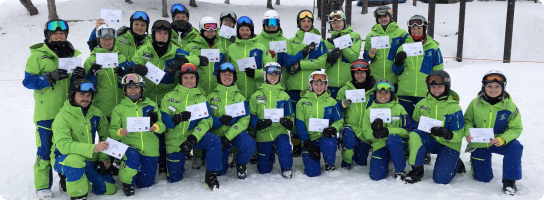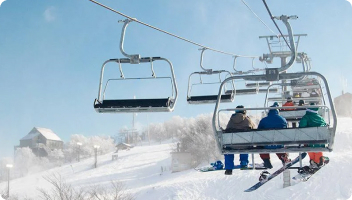Those looking to work their first ski season often make the mistake of spending hours looking for the right skis, and barely any time looking for the right pair of ski boots.
Their rationale is – skis are what make me fast, and it is skis that look cool, not my boots!
Well, dear readers, it’s time to reverse this order of priority.
Let me lay out the case for spending more time on choosing the right pair of boots, before you rush off to get that new pair of skis.
Boots make the skier
Your boots are what has direct contact with your feet. Without good, solid boots, your ability to control the skis is greatly diminished. You simply cannot control a ski when your boot is washing around on your feet or you heel is lifting out of its place.
Second, no-one can enjoy riding when their boots are uncomfortable. An uncomfortable boot is effectively enough to ruin a day’s riding, no matter what the snow conditions are, how much powder is puking down, or how awesome your new skis are.
And third, of course, it’s so easy to change and try out a new pair of skis during the season at the rental shop, whereas your boots you will carry with you the entire season.
For these reasons, for any seasonal worker, it is highly recommended to invest in purchasing a pair of boots that fit, and which will allow you to work the skis to maximum effect.
Here are some of the factors to consider when purchasing your next pair of ski boots.
1. Your Ability
In general, beginner skiers will prefer a slightly more comfortable boot, while a more advanced skier will prefer a slightly tighter boot. That is, an advanced skier would go for a fit that is half a size, to a full size smaller than a regular fit.
The reason is that advanced skiers will want to hit big mountain terrain, park, steeps, cliffs and chutes and will likely prefer a tighter boot to ensure less wash in the boot upon hard impact to the skis.
In contrast, beginner skiers will likely prefer a more comfortable fit on the foot. For beginners, it is less important to ensure minimal wash in the boot, as the impact on the skis from bunny slopes and groomers is less severe.
2. Ski Boot Sizing – Factors to Consider to Choose the Correct Size
Ski boots sizes are converted from regular shoe sizing using the Mondopoint scale. This converts a US/UK/EU size into a centimetre size on the Mondopoint scale. You can also measure your foot using a ruler to get an approximate size.
If you ever hire boots at a ski rental shop, they will use the Mondopoint scale to pick out the right size boots, generally regardless of your ability level (the assumption being that more advanced skiers will generally not be hiring boots from the rental shop).
However, when choosing your own pair of boots to wear for the season, a little more precision is necessary.
The Mondopoint scale is really a very rough scale, given your shoe size can vary between brands in your regular shoes. It also doesn’t matter too much if your regular shoes are a size too big, whereas this can be quite a problem in your ski boots.
Rule of thumb on length
For length, a general rule of thumb is that, if you are standing up tall in the boot, your toes should be lightly touching the end. When you go into a dynamic ski pose (that is, shins pressed against the tongue of the boots, hips lowered, and hamstrings and glutes engaged), your toes will pull slightly back from the top of the boot, and you should no longer be able to feel the end of the boot.
Socks
It’s a good idea to wear thin socks when you are trying on new boots. This is because a thick pair can give you the false impression that the boot is a good fit, when actually it is slightly too big.
In addition, better skiers will tend to wear thinner socks as the boot and liner provide more than enough warmth, and the thinner sock means slightly more control in the boot.
Liner compression
The liner is the padded part of the boot. When you first try on a boot, the liner will feel quite cushy, and might even feel too tight. However, you need to remember that liners will compress with use, which is known as ‘packing out’. This will make the boot feel bigger than when you first bought it, and is a common trap for those purchasing their first pair of boots.
If the boot feels too comfortable straight away, have a second look! There’s nothing worse than buying a pair of boots that feel great on first wear, only to have the liner compress and you realise the boot is too big. You want a pair of boots that still feel good at the end of the season, and seasons beyond, not just the beginning of the season.
Some custom liners can be moulded to the shape of your foot by a boot fitter. This might add an extra bit of comfort to your boot, though it certainly adds to the cost of the boot.
Foot bed
It is possible to get a custom foot bed underneath the liner to add to the comfort of the boot. Lean Boots typically have a fixed forward lean to them. A spoiler at the back of the boot can be used to adjust the forward lean of the boot if you have a problem.
Shell length
Some boot fitters might remove the lining of the boot and ask you to stand in just the shell of the boot. This is one way to check the size of the shell as compared to your foot.
This is an imprecise measurement because liners and insoles are constructed differently. However, if you slide your toes to the front of the boot, a general guide is that you should be able to fit one to one and a half fingers between your heel and the back of the shell (so around 1.5cm – 2cm).
Shell width – (otherwise known as ‘last’).
Of course, length isn’t the only measurement you should be examining. Width is important as well. This can cause problems, particularly around the knuckle of the toes where the widest part of the foot is. Make sure to get a boot that fits length, but is not crushing the sides of your feet.
Boot manufacturers will often make the same type of boot in a narrow, average or wide ‘last’ to accommodate different types of feet.
If you do purchase a boot that is too narrow, all is not lost. By heating the shell, boot fitters are able to ‘punch out’ the sides of the shell, to make it a little wider on pressure points. Depending on the boot, this can be a good fix, although some boots have memory which means they will revert to their original shape over time.
Unfortunately, it still remains a problem in the boot industry that aggressive skiers who want a tight boot will have problems if they have a wide foot. Stiffer boots still, for the most part, come in narrower shells, which means having to modify the boots, or searching a bit harder for a tight-fitting, stiff boot, which still has a wide ‘last’.
The same goes for beginners who will still generally find that softer flexing boots tend to come in wider lasts. So those beginners with narrow feet would still often be only able to find wide-fitting boots. If you fall into one of these categories, a custom mould might go someway to helping you out.
3. Ski Boot Flex
Flex of the boot indicates how stiff the shell of the boot is. The higher the flex rating, the stiffer the boot. There is no industry standard, however, so the guide given by the boot manufacturer is indicative only, and will require you to try the boot on for feel.
As you progress throughout the season, you will likely start to want a more advanced boot. So, it’s important to buy a boot you can work into, rather than a boot that is immediately super comfortable if you plan to spend a large number of days on the hill over the season.
Beginners and intermediates will likely prefer a medium to high flexing boot, which is generally much more comfortable on the foot over the course of the day. As a beginner, uncomfortable boots are one of the major reasons to step off the hill, and stiffness is one of the biggest reasons for uncomfortable boots.
Advanced skiers will generally prefer a stiffer boot which allows for greater control in a wider variety of conditions. In moguls, steeps, cliffs and other off-piste terrain, you will likely want a boot that gives you precision and a greater ability to translate feet movement into ski movement.
Ski racers prefer incredibly stiff boots in order to ensure maximum precision on the even, groomed runs.
Those who like off-piste and big mountain often choose to scale the stiffness back just a touch, as they help to absorb some of the impact of the crud, bumps and rocks.
Women have a generally lower flex rating simply because of a lower body weight. But if you’re a lighter than average male, or a heavier than average woman, you may need to adjust accordingly.
An indicate flex rating table is below:
| Beginner | Intermediate | Advanced and expert | Racers |
|
| Men | 60-85 | 85-105 | 105-130 | 130 and over |
| Women | 50-70 | 70-90 | 90-110 | 110 and over |
4. Calf Shape and Volume
Boots that fit a narrow calf tend to also be narrow through the heel, middle of the foot and the ‘last’ or end of the boot. Conversely, boots with more volume through the calf tend to retain that volume through the middle of the foot and the last.
This can present a problem if you have a narrow calf, but wide feet, as the perfect fit around the calf might mean you are too tight around the sides of the toes. The same goes for those with a wide calf and narrow feet, which is a more common issue in women.
This is where different brands will suit different people, so it’s important to try a few boots on for size to ensure you are getting a great fit.
5. Buckles
When your boots are done up, you want to ensure that you are not tightening up to the last clip straight away. If you are, it likely means the boot is too big for you. As you spend the day on the hill, the boot will loosen, such that skiers often need to tighten the buckles during the day. You want to have the ability to tighten the buckles, which means they shouldn’t be done all the way up to start the day.
When doing up your boots, it’s generally advised to start with the two buckles on the calf. This is because the toe buckle does not (or should not in a well-fitting boot) add much to the tightness of the boot, while the second bottom buckles and the calf buckles are the more important ones to keep your heel in place. You do not need to do your toe buckle up too tightly.
Four buckles is standard for boots. Some boots use fewer than four buckles. Rental shop boots often come with just two buckles, more for convenience than anything. Touring boots might use just two buckles for lightness.
Some buckles give you a little extra precision with a little crank on them to allow for micro adjustments to length of the buckle. Remember that the fit of the boot will often loosen throughout the day, so these mini-cranks can help to keep the boot at its best fit. Again, this is a preference depending on how sensitive you are to having the perfect fit throughout the day.
6. Boot Punching and Custom Moulded Shells
Certain shells can be heat moulded and custom fitted, to give you that extra bit of comfort and improve the fit. This can be especially handy if you have a difficult foot to fit (such as a narrow calf and wide foot).
Boot punching can be used to target and widen certain pressure points in the boot.
7. All Terrain Boots
Cross-over touring boots are becoming more popular. These boots allow you to more easily walk in the boots and allow you to trek some distance to search for backcountry powder.
There are also touring bindings you can get for your skis for this purpose.
Boot Care
A few tips on caring for your boots will ensure they last you several seasons.
1. When done with the boots at the end of the day, buckle the boots back up on the first clips (the least tight position). This helps to ensure that the boots retain their shape, and mean that each time you slip them back on they will not have deformed from the previous day.
2. Ideally, you should wear a fresh pair of socks each day. This helps to limit the amount of moisture and sweat coming into contact with the liners.
3. When putting on the boot, make sure that your foot is correctly inside first, and that the tongue isn’t caught outside the shell and is aligned correctly. If the tongue is sticking out when you buckle up the boots, this can damage the liner as well as the shell. In certain cases, it can even lead to tears in the shell (which this columnist knows only too well).
4. Allow your boots to dry overnight so as to remove the moisture and avoid the build up sweat and odours. Some people like to take out their liners overnight to ensure they are dry the next day. A boot dryer is great if you have one, or some lodges will have a drying room.
Direct heat, such as with a hairdryer is not recommended, as direct heat can damage the liner. Directly heating the boots can also mess with any custom mould. A warm environment is a much better option to dry your boots.
5. At the end of the season, gently wash the shells without using harsh detergents or solvents. There is no need for anything that harsh. You can then leave the shells out to dry. Again, no need to apply direct heat, they will certainly dry before the next winter rolls around!
6. When storing the boots at the end of the season, store them in a cool, dry place. As you won’t be using them again for several months, ensure they aren’t in a place likely to attract damp or mould.
Ski Boot Brands
Some of the major manufacturers of ski boots include:
- Lange Ski Boots is a major producer of quality boots, which was the first producer of plastic ski boots.
- Rossignol is a French company which has a big name for ski boots.
- Salomon is another French ski boot producer which has a long and storied history.
- Nordica Ski Boots was a company founded in Italy, and now owned by Technica Group.
- Atomic is an Austrian company which is another big name in ski boots and ski racing.
How long do ski boots last and how often should I replace them?
This really is the question to which you will struggle to find good answers. Some great skiers will have the same pair of boots for seasons on end, while others like to upgrade whenever they can.
As a very general rule of thumb, if you are properly looking after your boots, ski boot manufacturers such as Nordica think you should be able to get 150 days on snow with the boots before you start to notice the liner breaking down and the flex starting to noticeable soften.
This obviously depends on the boots, so feel is still a good guide.
Of course, 150 days on snow for some people is barely two seasons, while for the more intermittent skier, that might be a decade, by which time boot technology changes mean you will want to upgrade simply for a better boot, rather than the boot carking it.

